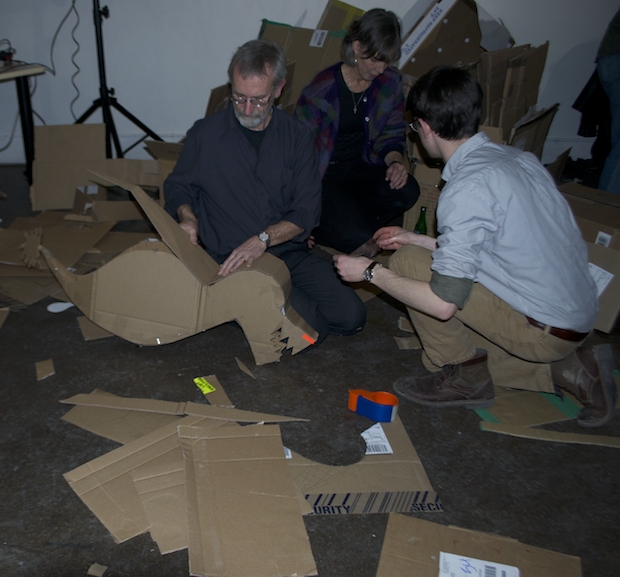


Most 10-year olds celebrate their birthday with cake and presents, but a different kind of party is needed when you’ve spent your first decade living on Mars.
Toronto’s Makesworks studio held a special night to mark the Mars Rover Opportunity, the robotic device that landed on Mars Jan. 25, 2004 and was designed to last only 90 days.
Famed scientist and media personality Bill Nye, The Science Guy, judged a Mars Rover building competition as part of the festivities.
While the contest was to build a new Mars Rover from cardboard an packing tape, and judged by the normally quite scientific Nye, not everyone took it seriously. One group built a suit out of cardboard that went over one of their members. Another group built something similar to a dragon.
The competition also required a sheet listing goals and technology of each rover making things quite scientific.
“To us, the most important element is how easy these rovers are to cut out of cardboard, and how much weight duct tape will take under pressure,” says Kate Howells, Canadian national coordinator for the Planetary Society, “With a judge like Bill Nye the Science Guy, I admit our priorities may be somewhat skewed.”
The evening was a blend of scientific discussion and play. The many astronomy enthusiasts were eager to show off whose brain was biggest while discussing if there is any life on Mars.
“At Opportunity’s landing site, we found evidence of an early Mars that had acidic ground water that sometimes reached the surface and evaporated away, leaving salts behind. It was an environment with liquid water. …We found gypsum veins and a rich concentration of clay minerals. The clay minerals tell us about water chemistry that was neutral, instead of acidic, more favorable for microbial life, if any ever began on Mars,” says Steve Squyres of Cornell University, Ithaca, N.Y., the rovers’ principal investigator.
Attendees marveled at the success of the project and the limited funding NASA projects are receiving. NASA no longer goes into space, it uses contractors. Opportunity is one of four rover missions to Mars.
“Ultimately, it’s not only how long the rovers work or how far they drive that’s most important, but how much exploration and scientific discovery these missions have accomplished,” says John Callas, from the Jet Propulsion Laboratory at the California Institute of Technology, and project manager for NASA’s Mars Exploration Rover Project.
The party was hosted by the Planetary Society, a group founded by famed astronomer Carl Sagan and currently chaired by Nye.






